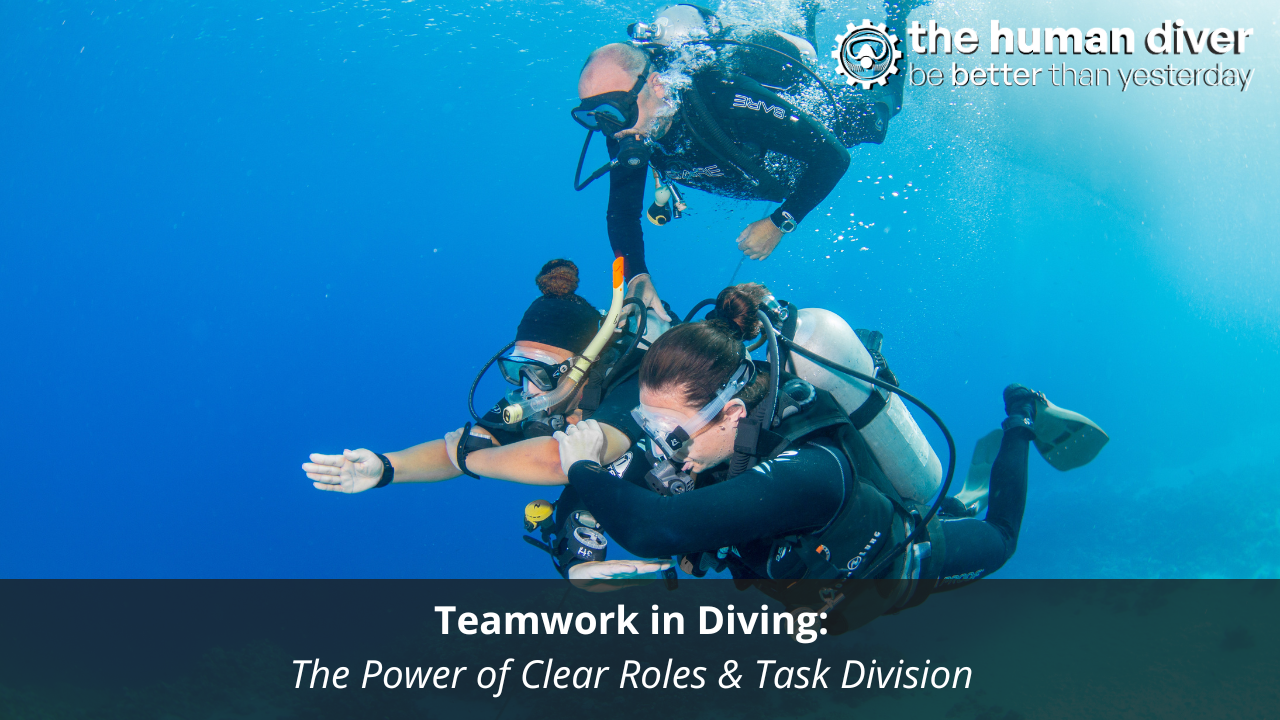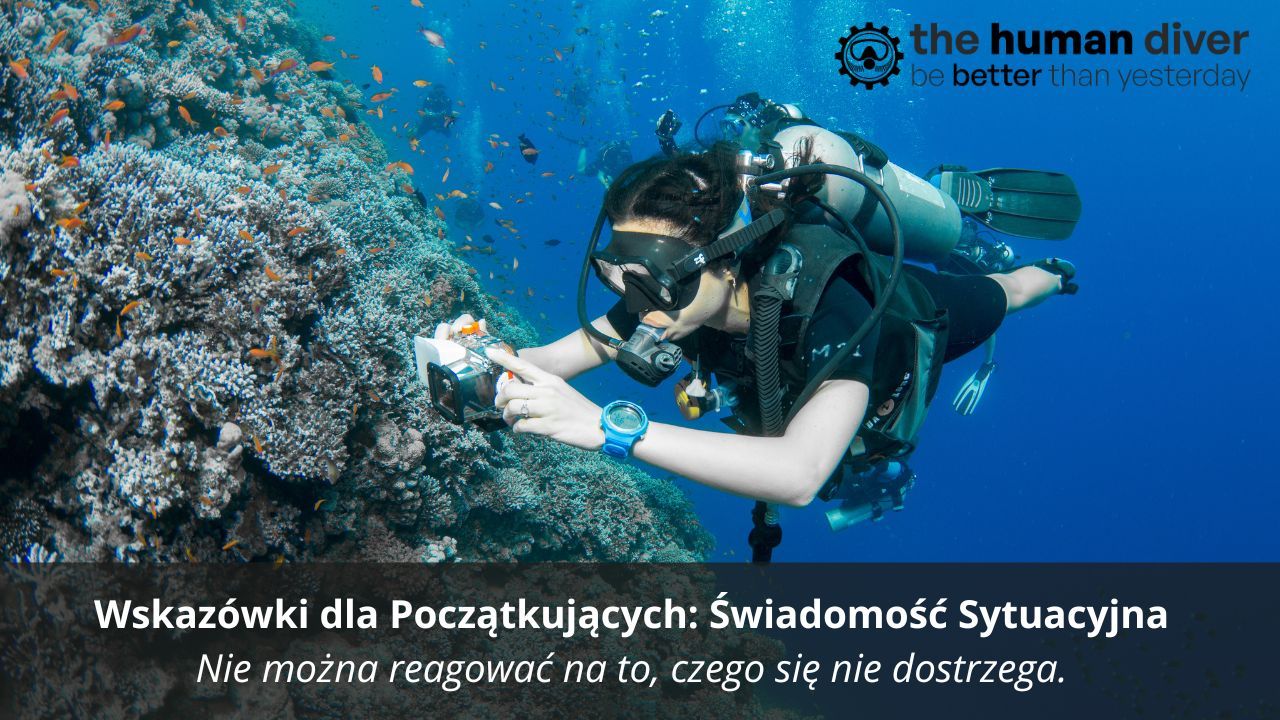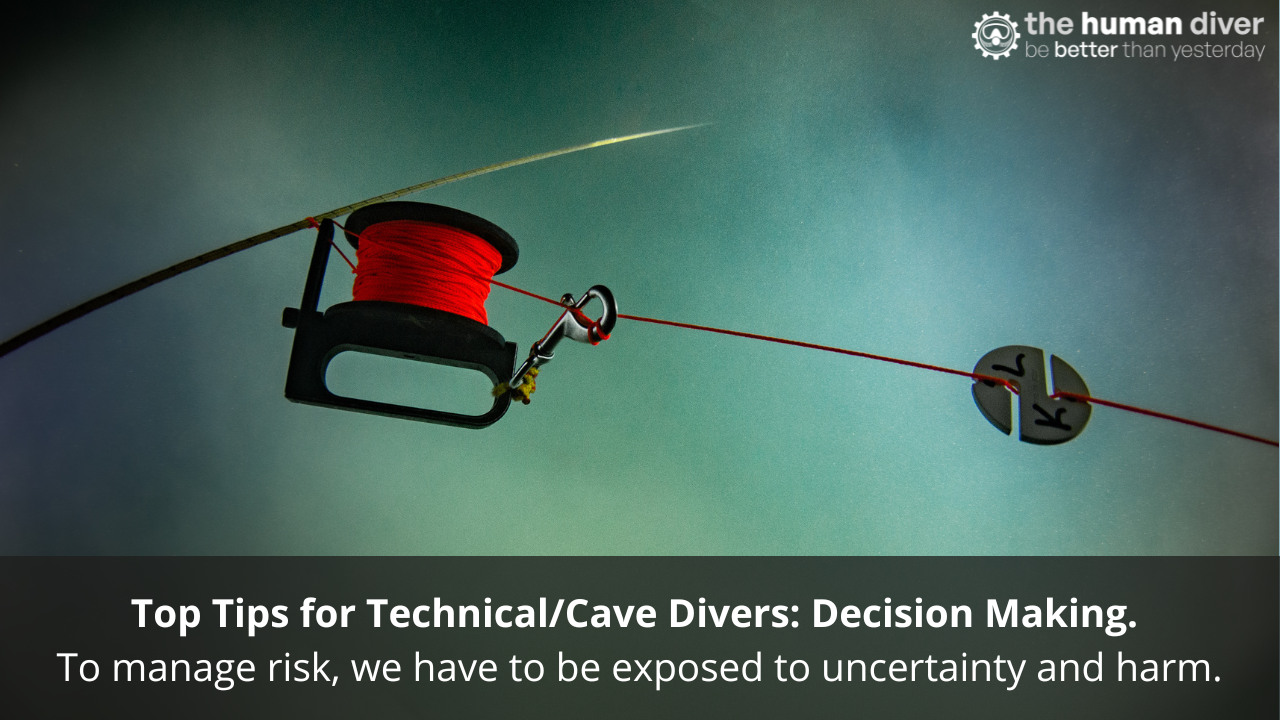
Top Tips for Beginner Divers: Situation Awareness
Aug 05, 2025"You can’t respond to what you don’t notice."
This simple statement lies at the heart of Situation Awareness (SA)—one of the most vital non-technical skills for divers of all levels. Good divers don't just have accurate trim, low air consumption, or a good sense of navigation—they make good decisions in dynamic environments, often with limited sensory input. To do that, you need strong situation awareness.
In this blog, we’ll break down what situation awareness actually is, why it matters so much in diving, and—most importantly—how beginner divers can improve it from their very first dives.
A short story to set the scene
When I did the final dive of my Open Water course, I had a great time. I didn’t run out of gas. I didn’t go too deep. I didn’t lose my buddy—or the instructor. I saw some rocks, I saw some weed, I saw some fish! Mission accomplished, right?
Maybe not...
Did I know where I was going?
No.
Did I always know my depth?
Not really.
Did I keep a close eye on my gas?
Definitely not.
I was just following along, enjoying the experience and trusting that everything was under control. And thankfully, it was—because my instructor, Stu, was taking care of all of that and more. He was tracking our direction, keeping an eye on our depth and time, managing air checks, watching for hazards, and making sure the group stayed together.
In other words, he was taking care of situation awareness for the entire team for the entire dive. And as a beginner, I didn’t even realise it.
It wasn’t until I started diving without an instructor by my side that I realised how much I’d relied on someone else to manage the bigger picture. And how much steeper my learning curve now was as a result....
What is Situation Awareness?
Situation Awareness can be broken down into 3 levels:
-
Perception – Just raw data absorbed by your senses. Example: you perceive that you're having to swim harder to get to the end of the reef.
-
Comprehension – Understanding what that means. Example: the outgoing tide has turned and is flowing against you.
-
Projection – Predicting what’s likely to happen next. Example: the visibility could get worse - it is important to stay close to my buddy. I'm working harder - my gas consumption will increase.
Why is SA harder for beginners?
When you're new to diving, you're often overwhelmed. You’re trying to remember hand signals, control your buoyancy, equalise your ears, check your SPG, and just breathe from this piece of plastic in your mouth. Your brain is operating at full capacity—and that limits your ability to perceive and comprehend what’s happening around you and, more importantly, be able to project what that means in the future.
Psychologists call this cognitive overload. It’s not a flaw; it’s normal. It's just how the human brain works. But the good news is that SA can be improved.
Top Tips to improve your Situation Awareness as a beginner diver
1. Develop mental models during a pre-dive brief
Situation awareness starts before you hit the water. During your dive briefing, form a mental map of what the dive will look like. Ask:
-
What’s the planned route?
-
What depths are we expecting?
-
When will we turn the dive?
-
What are the key reference points?
-
What could change and how will we respond?
A good brief makes perception, comprehension and projection easier and helps you recognise when things deviate from the plan.
There is a lot that goes into giving a dive brief. This blog goes into more detail.
2. Communicate early and often
Keep your buddy informed. Pointing out your air pressure, cross-checking your depth, or confirming direction helps both of you stay in sync and maintain shared awareness. If you’re unsure of what’s going on, ask—underwater communication isn’t just for emergencies.
3. Be curious, not complacent
Stay engaged with your environment. Ask yourself pertinent questions:
- “Where’s the boat?”
- “Is the current stronger than when we started?”
- “What’s my buddy doing?”
This isn’t paranoia—it’s proactive scanning. It helps you detect subtle changes early, allowing you to make small adjustments rather than big reactions.
4. Manage your mental bandwidth
If your mask is leaking, your buoyancy’s all over the place, and your breathing is rapid, your awareness will shrink. Recognise when you’re overloaded and prioritise. Get neutral, get calm, and then reassess. Try to fix one thing at a time. SA is a higher-order function—it requires spare capacity.
5. Debrief after each dive
After your dive, take a few minutes to reflect on your SA as a team:
-
What did we notice? Why?
-
What did we miss? Why?
-
What would we do differently next time? How will we do that?
Like a good brief, there is a lot that goes into an effective debrief. Here is a link to another blog to help you learn more about how useful a debrief can be to improve learning and strengthen your SA for future dives.
Common Situation Awareness failures in beginner divers
It is worth discussing that we don't really 'lose' SA, we just have our attention focused somewhere other than where it should be.

To keep things simple, here are some signs of 'lost' situation awareness.
-
Tunnel Vision: Getting so focused on your depth gauge or a pretty fish that you lose track of time, gas, or your buddy.
-
Lost Buddy: Not scanning frequently or staying close enough to maintain visual contact.
-
Gas Surprises: Forgetting to check gas regularly or being unaware of how quickly you’re using it.
-
Drift or Disorientation: Not noticing current changes or failing to use compass/navigation cues.
-
Group Separation: Following your curiosity without considering where the group is going or when the turn point is.
Note that all of these are generally discovered after the fact. I.e. SA has already been lost, you just realise it when you look at your gauge and have less gas than you thought you had or look up and your buddy is nowhere to be seen.
Situation Awareness is a skill, not a trait
The best divers you know weren’t born with good situation awareness. They built it. They developed habits that made them more aware. That means you can too.
Don’t wait until you’ve got 100 dives to start working on SA. Start on your very next dive. Think of it as part of your core skillset, just like buoyancy or trim. Not only will it keep you safer, but it’ll also make your diving more relaxed, more enjoyable, and more in control.
Final Thoughts
Being situationally aware as a beginner diver isn’t about being perfect—it’s about being intentional. The underwater world is stunning but unforgiving. The better you can understand what’s happening around you and anticipate what might come next, the more confident and capable you’ll feel.
So next time you dive, remember: slow down, stay curious, keep checking in with your environment and your team, and keep learning.
Your brain is your most important piece of dive gear. Make it better. Be more aware.
If you'd like to know more top tips for beginner divers, you can start here by learning about some foundations of being a good communicator underwater, which is all part of building and maintaining SA.

Mike Mason is part of the Human Diver Team. Our mission is to give you the skills and knowledge so that you can be better than you were yesterday. If you'd like to deepen your diving experience, check out the youtube channel and consider taking the online introduction course which will change your attitude towards diving and make it better and safer. Alternatively, visit the website or start your journey into Human Factors in Diving with this introduction blog .
Want to learn more about this article or have questions? Contact us.












